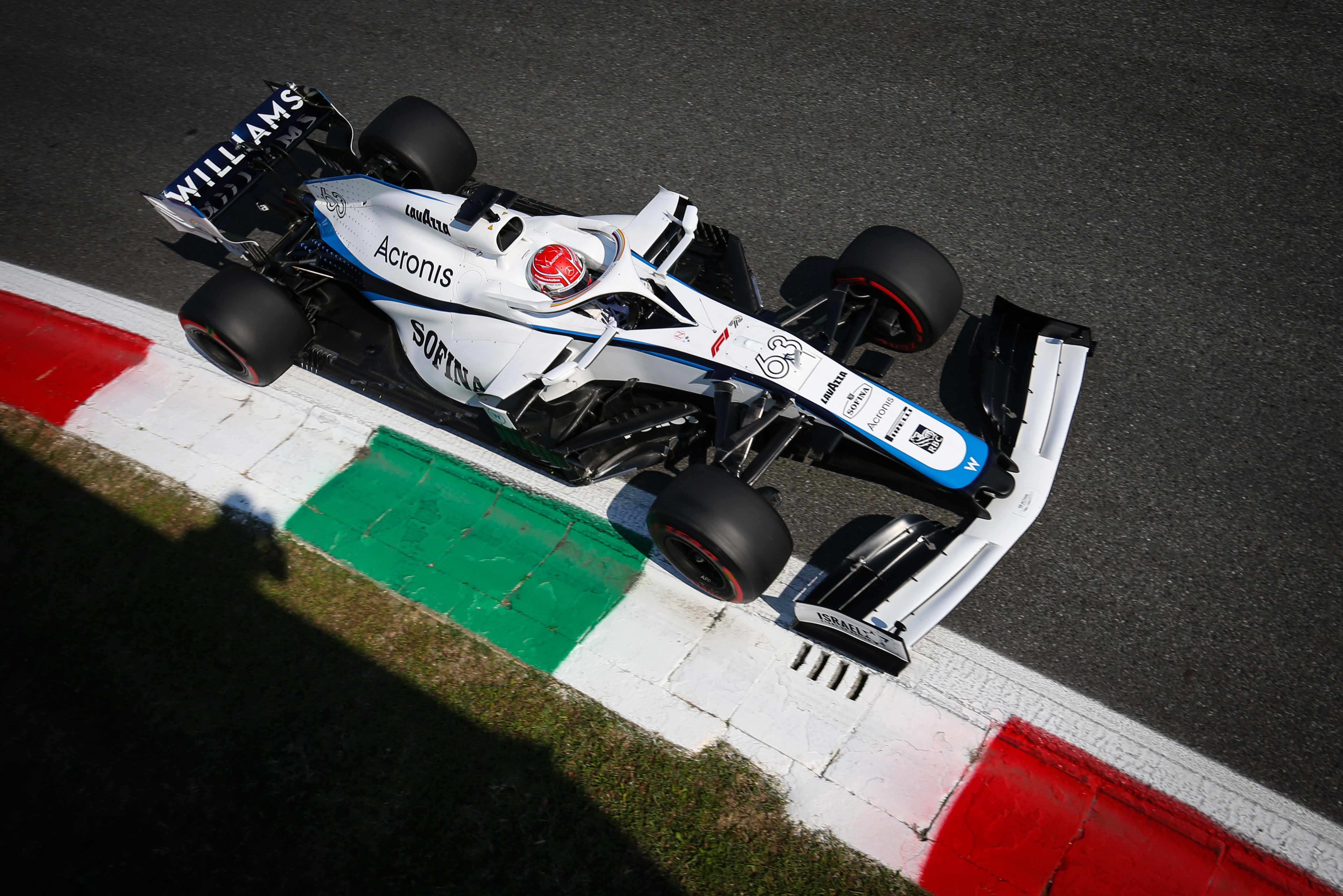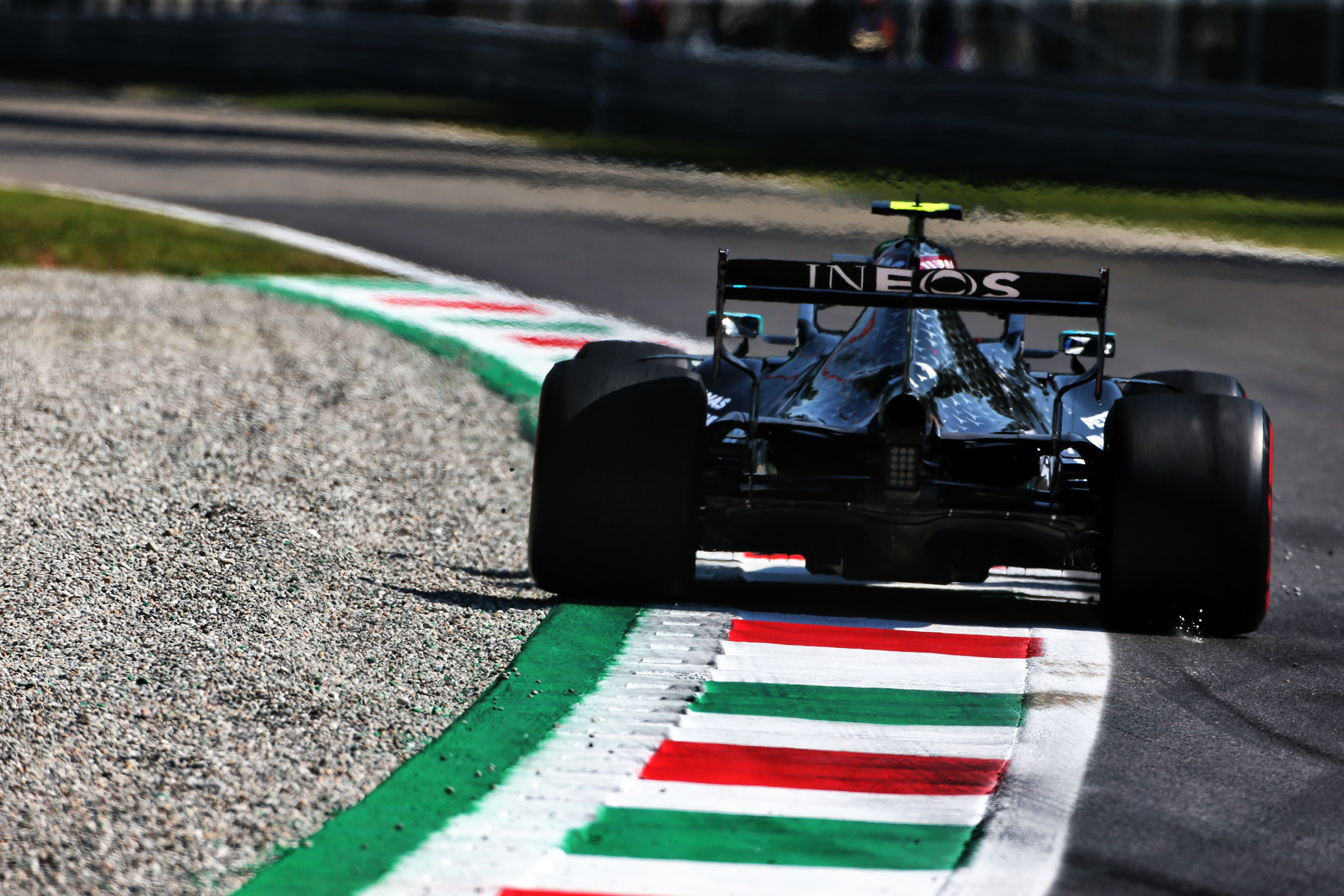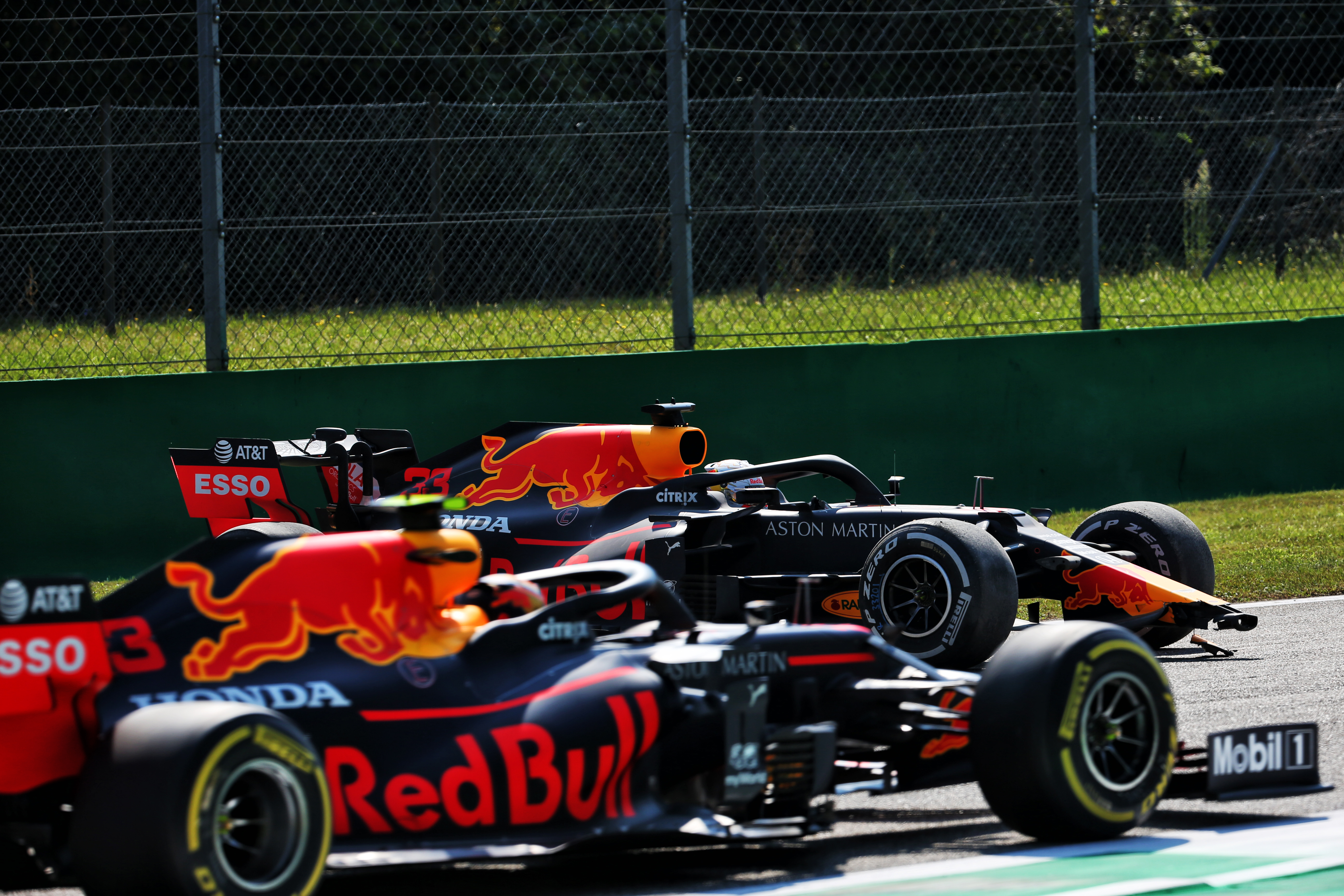Up Next

In the brave new world of restricted engine modes, Mercedes appears to have stretched its advantage. That’s the reasonable conclusion that could be made from Friday practice at Monza.
In headline times, Lewis Hamilton led Valtteri Bottas in both morning and afternoon sessions, held on a fairly hot track, with everyone on their traditional Monza super-low downforce setups. Although last week at Spa the Mercedes wasn’t at its happiest when it had been briefly tried on its lowest downforce settings (with a more Monza-like wing than that which was eventually chosen there), that was around a very different track.
Around Monza, it seemed very much in its sweet spot. In single-lap pace, its advantage over the next-fastest car was around 0.9s in both sessions.
This is bigger than usual at this stage of a 2020 weekend. Technical Directive 37 comes into force here, requiring power units to be run in the same mode from the beginning of qualifying to the end of the race. Has this had the effect of increasing what was already a colossal Mercedes advantage?
Mercedes-powered George Russell seemed to be trying to prepare us for this reality in the Thursday press conference when he said, “If anything it’s only going to help them even more in the race. So the whole idea of trying to slow them down is actually going to go completely the opposite way and is only going to enhance their performance.
“I think on a Saturday it will probably compromise us a tenth or two. But we expect it to also compromise the other manufacturers a tenth or so. So we are probably net one-tenth down on a Saturday.

“But on a Sunday we’re net up by a big margin. And I think what Mercedes has done to improve the engine to allow us to run a very high engine mode for the whole race is really impressive and she’s going to be flying on the Sundays.”
How much mechanical stress is relieved by the absence of ‘party mode’ settings is out of all proportion to the 20s or so per weekend of its allocated use. That saved stress can now be redeployed over the whole weekend.
If the Mercedes previously had the most potent ‘party mode’, it was because of greater inbuilt resistance to that stress. That will simply now be expressed in a different way. Everyone will have been running conservative modes on Friday – as usual.
Leading the Mercedes chase was – on paper – Red Bull in the morning and Lando Norris’s McLaren in the afternoon
None of Mercedes, Ferrari, Honda, or Renault needed to use these sessions for experimentation under the new permitted operating conditions; that was all worked out well in advance on the dyno and in simulation. But if the base modes have been enhanced by the new ruling, then that was possibly a factor in the enhanced Merc margin of today.
But the mode restriction only applies from the beginning of qualifying to the end of the race. So what was being used today will still have been a more conservative setting than will be used tomorrow. The chosen qualifying/race mode will not be uniformly the same at each track.
Each of the PU manufacturers has worked out a very intricate matrix to determine the optimum use of the available engine mileage over the very different remaining tracks. Monza will use a more than proportional chunk of that availability, as the most power-sensitive track of all. There will, therefore, likely be a bigger step-up from Friday to Saturday than at any of the other remaining tracks.
The significance of that? Maybe Mercedes will be yet-further ahead when everyone turns them up tomorrow for the rest of the weekend…

All three compounds of tyre – C2, 3, and 4 – were apparently working well. Over a single lap, the soft was worth around 0.5s over the medium. That opens up the feasibility of Mercedes to go through Q2 on the medium to give itself greater strategic flexibility. But it’s actually debatable whether that would be worth the downside of inferior acceleration off the grid. Such is Mercedes’s inherent advantage, there would be a definite logic in just doing the same as the others.
The usual Monza conflict between positioning for a tow but getting good tyre heat on the preparation lap was evident even in these practices. It promises to be a very hectic Q1 for that reason and qualifying may turn out to be a little fraught.
With the tow potentially worth up to 0.7s if timed perfectly, it will probably be crucial in deciding the order in the tight pack behind Mercedes.
Leading the Mercedes chase was – on paper – Red Bull in the morning (with Alex Albon) and Lando Norris’s McLaren in the afternoon. Norris’s place in the order was ironically flattered by a troublesome start to the session which meant he was doing his qualifying sim late, with the track at its quickest when everyone else was doing their race runs.
Take that out of the equation and lap-for-lap Max Verstappen’s Red Bull was vying with Pierre Gasly’s AlphaTauri as ‘best of the rest’. Historically, Red Bull runs its Friday sessions quite conservatively in terms of fuel load and should be expected to give Verstappen ample opportunity to put himself in his usual 2020 ‘No-Man’s Land’ between Mercedes and the midfield pack.
On the other hand, the car did seem to be an even more challenging drive than usual in low-downforce trim, Verstappen spinning spectacularly at Ascari in the morning and Albon continuing to seek a less nervy corner entry. This was in contrast to the AlphaTauri which may not have the outright grip of its cousin but was exhibiting a beautiful balance that was allowing Gasly and Daniil Kvyat a great turn of speed whenever they took to the track. Great relative to the non-Mercedes, that is.

In the long runs, the comparison between Hamilton and Bottas favoured the latter but only on account of Hamilton’s runs being slightly messier, with a kerb thumping moment and more traffic issues.
In underlying pace, taking out the problem laps, Hamilton’s advantage over his team-mate looks real, albeit smaller than usual. “Valtteri is quick here,” said Hamilton, “and with so few corners it’s very difficult to find an edge. I’m expecting a very close battle with him.”
Bottas’ eight-lap average on the soft tyre was over 1s quicker than that of Verstappen over seven laps. On the mediums, it was more like 0.75s.
Verstappen was around 0.6s quicker than the AlphaTauris on these race stint simulations – and it was actually the Renault of Daniel Ricciardo that showed up as third-quickest on the mediums, well behind the two Mercs but edging out Verstappen.
Ricciardo did record a very quick single lap on the qualifying simulations at just 0.7s off Hamilton, but it was disallowed for track limit infringements. Although Cyril Abiteboul was playing down Renault’s chances of repeating or improving its Spa form, the potential is clearly there.
Much will come down to the perfect combination of tow and avoidance of penalties.




